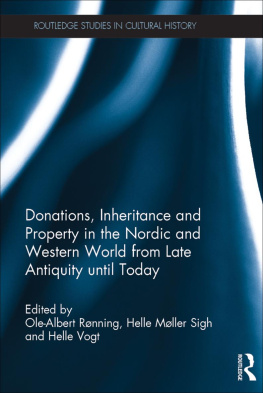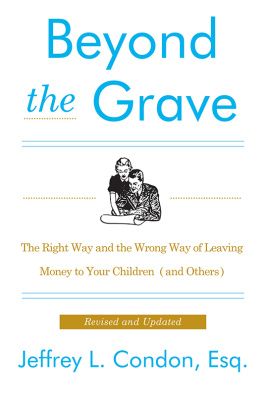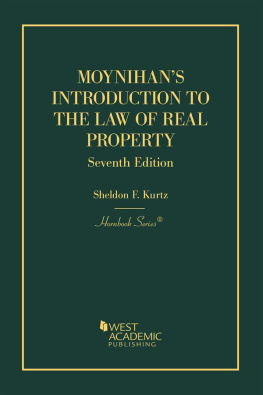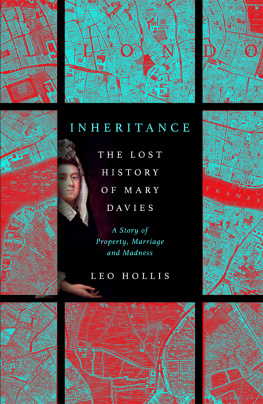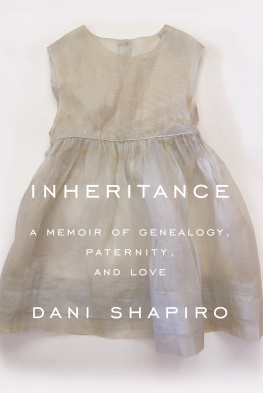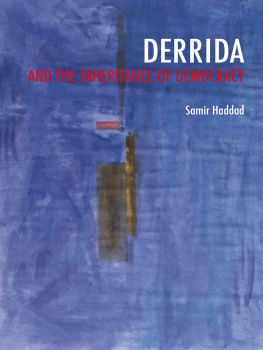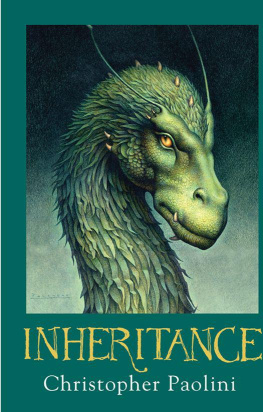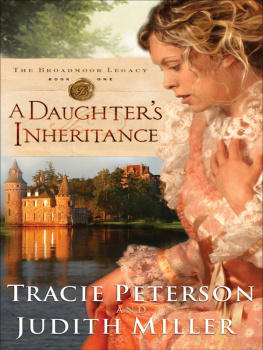1993 The University of North Carolina Press
All rights reserved
Manufactured in the United States of America
The paper in this book meets the guidelines for permanence and durability of the Committee on Production Guidelines for Book Longevity of the Council on Library Resources.
The publication of this work was made possible in part through a grant from the Division of Research Programs of the National Endowment for the Humanities, an independent federal agency whose mission is to award grants to support education, scholarship, media programming, libraries, and museums, in order to bring the results of cultural activities to a broad, general public.
Library of Congress Cataloging-in-Publication Data
Spring, Eileen.
Law, land, and family : aristocratic inheritance in England, 1300 to 1800 / by Eileen Spring.
p. cm. (Studies in legal history)
Includes bibliographical references and index.
ISBN 0-8078-2110-1 (cloth : alk. paper)
1. Inheritance and successionGreat BritainHistory. I. Title. II. Series.
KD1500.S68 1994
346.73052dc20
[347.30652] 93-590
CIP
An earlier version of chapter 1 appeared in the Law and History Review 8 (Fall 1990): 273-96. Reprinted by permission of the Board of Trustees of the University of Illinois Press.
97 96 95 94 93 5 4 3 2 1
THIS BOOK WAS DIGITALLY PRINTED.
Acknowledgments
As I hope in this work to give a new shape to a subject that has been much discussed, I necessarily take a critical stance towards much that my predecessors have written. But in turn, I could not have written without them. If in this work I succeed, then, in putting things together in a different way, it is only because of my predecessors original thinking and investigations. My fundamental acknowledgment is accordingly to all those who have written before me on this subject, even though I must disagree with their conclusion.
Of other acknowledgments I have few, but they are to individuals whose help has been great. Thomas A. Green, editor of the series in which this book is published, has not only been a kindly and efficient editor, but his perceptive criticism has been invaluable. Anonymous readers of my manuscript have pointed to places where my ideas needed to be filled out or to be more carefully expressed, and I am grateful to them. I also wish to thank Paul M. Romney, who read the manuscript with great care, offering many detailed criticisms that have undoubtedly improved it. Finally, were it not for my husband, David Spring, I should never have produced this book. He years ago put me onto the subject of inheritance among landowners in the nineteenth century. As I ventured backward into earlier centuries, he has at every stage helped in the formation of my ideas. He has even done research for me when he has been in England and I have been in America. Above all, he has ever encouraged an amateur and a female who had developed an interest in a technical legal subject to believe she could have something to say.
Law, Land, and Family
Introduction
This small book has a large aim. With some temerity, I confess it aims to recast the story of inheritance among the English gentry and aristocracy and, in the process, to suggest that a major motive force in the development of real property law has been neglected.
Obviously, a warrant needs to be given for what must seem so reckless an aim. Warrant lies in what can only be called the confusion that surrounds the subject. It is not that there are differences of opinion on the subject. Differences of opinion exist on many historical subjects, with authorities arguing upon one ground or another for one opinion rather than another. Here the problem runs deeper. It is that basic contradictions inhere in the work of the authorities themselves.
The trouble is first noticeable about the strict settlement. In 1950, in a famous article, Sir John Habakkuk argued that portions for younger children, especially for daughters, rose with the development of the strict settlement. At the same time, however, he recognized that the strict settlement was an invention for the better preservation of landed estates.1 The question would seem to arise how an invention that better preserved landed estates could at the same time have better provided for younger children, when younger children are natural obstacles in the way of preserving estates.
Another authority, Lawrence Stone, has made the strict settlement the legal ground for his theory that in the eighteenth century the family became more loving and egalitarian.2 Yet he has also declared that the effect of settlement was to increase the amount of property settled on the eldest son, which is to treat settlement as having the aim of preserving estates, but must cast doubt upon its egalitarian thrust.3 All the same, portions for daughters are said to have continued to rise throughout the eighteenth century.4
Lloyd Bonfield, who has studied the origin of the strict settlement, has also claimed that it increased younger childrens portions. He has, however, given two diametrically opposite reasons why it did so. In one place, he has declared that it raised portions because in the previous legal situationagainst which it must naturally be judgedlandowners had been in full command of their property, entails having become barrable (that is, breakable at will). In another place, he has declared that settlement raised portions because in the previous legal situation landowners had not been in command of their property. On the contrary, they had previously been bound by unbarrable entails.5
Despite the incoherence of these various arguments, the belief has become fixedit is an orthodoxythat the strict settlement raised daughters portions and that settlement is to be associated with the development of equality in the family.
Confusion goes deeper, however, than the eighteenth century and the strict settlement. It surrounds the medieval entail. A notable medieval historian, K. B. McFarlane, has argued that the entail was a threat to the integrity of landed estates. He has also argued that the entail made for the preservation of landed estates.6 Confusion also exists around the other medieval legal instrument, the use. The historian who has written the major work on the subject, J. M. W. Bean, finds that uses were developed as a means of providing for younger children in a legal system that was based on primogeniture. Wondering in his conclusion whether uses thus posed a danger to the practice of primogeniture, he declares they would not really have done so because landowners had always been able to provide for their younger children through entails.7
The bewildered reader who turns to doctrinal histories, to those awesome compendiums of the history of real property law, in hope of finding some way out of this confusion, will not find it. Doctrinal histories virtually ignore the family in laying out the development of real property law. At best, family concerns are of fleeting and peripheral interest, and when they are touched on, confusion of the kind already noted is not quite absent. For much the greater part, doctrinal histories treat real property law as a long struggle over perpetuities. Ever since Sir Edward Coke, at least, they have treated it in these terms. This treatment cannot reflect what landowners as fathers of families must have been primarily concerned with.


